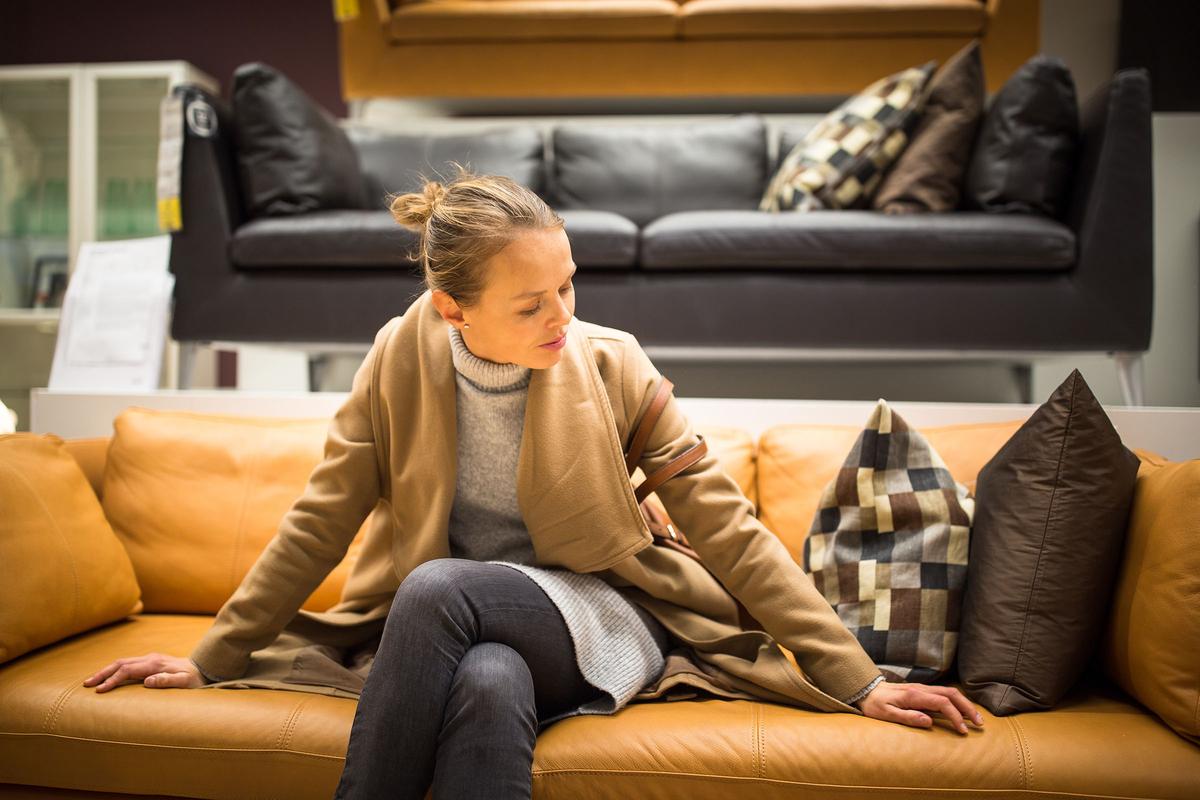

New research from Snap Finance reveals how credit-challenged shoppers approach furniture and mattress purchases and how retailers can better serve them.
Consumers with low or subprime credit often shop for furniture or mattresses out of necessity. Many purchases are driven by broken or worn-out items, not optional upgrades.
Speed matters when buyers face urgent needs. Credit-challenged shoppers often decide on a furniture or mattress purchase quickly.
Furniture spend is significant, even with tighter budgets. Credit-challenged consumers are still consumers and continue to purchase furniture and mattresses.
Barriers to traditional financing impact purchase decisions. Offering inclusive financing can remove friction and close more sales.
Having low or subprime credit changes how and why people shop for furniture and mattresses. For many, it's not about browsing for the perfect upgrade; it's about solving an immediate, urgent problem.
New research from Snap Finance reveals that credit-challenged consumers are more likely to shop for furniture and mattresses out of necessity – to replace a sofa in disrepair or a mattress that’s shot, for example. Snap found that among those with credit scores below 670, 44% said their recent furniture or a mattress purchase was because their old item was broken or worn out. And 29% made their purchase because their furniture or mattress was no longer comfortable.
These findings are from Snap’s “Closing the Credit Gap: Major Purchase Study", For this study, we asked consumers with and without credit scores below 670 about recent purchases of goods or services of $300 or more across one of 14 product verticals, including furniture and mattresses.
Removing barriers for high-intent credit-challenged furniture and mattress shoppers
More often than not, credit-challenged furniture shoppers are not simply redecorating. They’re replacing a broken furniture piece or a mattress that no longer provides a good night's sleep.
Or they’re starting with empty rooms, trying to afford what they need. A good number of furniture and mattress shoppers with lower credit scores (23%) made their purchase because they moved to a new home or apartment and needed a sofa, bed, mattress, or other item.
Either way, this is a highly motivated customer segment whose only barrier to purchasing may be qualifying for traditional financing. Making inclusive financing, such as Snap-branded lease-to-own and loan options, available to your customers can be a game changer for them – and for your sales and revenue.
Why furniture and mattress purchases often stem from items in disrepair
When money is tight, people delay big purchases as long as possible. Unlike shoppers with better credit who might plan a purchase for months or be shopping for less urgent reasons, those with low or subprime credit often enter the market because they have no other choice. A broken bed frame, for example, is a problem that needs a solution now. This urgency drives credit-challenged shoppers into your store or onto your website with a clear mission: find a furniture piece or mattress quickly.
Retailer takeaway
Your merchandising, in-store signage, and sales conversations should reflect this urgency. Position certain product collections as "in-stock and ready for delivery" to appeal to more immediate needs. Train your sales team to ask questions that uncover the shopper's timeline, such as, "Are you looking to replace something that's no longer working for you?"
How credit scores affect average spend for furniture and mattresses
Despite their financial challenges, consumers with credit challenges haven't stopped being consumers. Although 70% of those with lower credit scores have cut back on nonessential spending, Snap Finance found that for furniture and mattresses, consumers of all financial backgrounds are shopping at similar rates.
Among consumers with lower credit scores:
23% purchased furniture in the past six months, compared to 27% of shoppers with higher credit scores
18% purchased a mattress in the same time period, compared to 15% of those with higher credit scores
How much are they spending?
Among consumers with lower credit scores:
For furniture, the average spend was $1,428, compared to $1,933 for those with higher scores.
For mattresses, the average spend was $690, compared to $1,440 for those with higher scores.
Several factors contribute to this spending gap, including budget limitations and access to financing. Offering access to accessible furniture financing or “bad credit options” can bridge this gap.
Why credit-challenged shoppers may need to act fast
Credit-challenged shoppers often act quickly. Our study found that 21% of consumers with low or subprime credit shopped for less than a week for furniture or a mattress, and 27% shopped one to two weeks. That means nearly half made a purchasing decision in 14 days or less.
With little time to spare, our study found those they don't shop around as much. Only 45% of furniture and mattress shoppers with lower credit scores considered three or more businesses, compared to 70% of those with higher credit scores. That means if you can meet their needs on the first visit, you are very likely to win their business.
Inflation also plays a role. We found that 42% of consumers with lower credit purchased sooner than they had planned due to concerns about rising prices or to take advantage of a sale or promotion. On the other hand, 39% delayed a purchase due to their financial situation or the economy. An unexpected bill or a reduction in work hours can quickly push a planned purchase to the back burner.
For retailers, your processes needs to be fast to keep up with highly motivated customers. Do you have inventory in stock, ready to ship? Is it fast and easy to shop in your store? Is your checkout process simple and straightforward, including how you present financing?
Takeaways for furniture and mattress retailers
Customers with credit challenges have distinct preferences, behaviors, and challenges when shopping and paying for furniture and mattresses. By building in a few best practices, your business helps ensure more customers are able to comfortably furnish their homes while helping to expand your customer base, increase sales, and build brand loyalty.
Clear communication. Help alleviate any financing concerns by clearly communicating options to pay over time, including alternative financing, through point-of-purchase signage, web banners, and a knowledgeable sales team who knows the ins and outs of all financing options.
No judgement. Offer inclusive sales practices and a good selection in every price point. Remember, customers with lower credit scores may feel anxiety, embarrassment, and stress wondering if they’ll be able to get the furniture or mattress they need because of their financial situation.
A robust online presence. Online shopping and purchasing capabilities, including user-friendly mobile experiences, are crucial for online shoppers, especially those who prefer the convenience of shopping with their smartphone.
Inclusive financing. Offering access to inclusive financing options, such as Snap-branded lease-to-own financing and installment loan options, helps more customers get the furniture and mattresses they need. Open the door to new markets and new customers with alternative financing solutions.
How Snap Finance helps furniture and mattress merchants capture this demand
A significant portion of your customers rely on financing to make furniture and mattress purchases, and traditional financing is often not available to those with credit challenges. Promoting additional options to pay for their furniture over time can be a lifeline for customers with lower credit scores.
Snap-branded lease-to-own financing and loan options are designed to meet the urgent needs of shoppers who need mattress financing, furniture financing, or other options and may have less-than-perfect credit.
Snap Finance can help you increase conversion rates, see larger average tickets as customers buy what they truly need, and build loyalty that brings them back for future purchases.
Check out these additional resources from Snap Finance:
Snap-branded product offering includes retail installment contracts, bank installment loans, and lease-to-own financing. For more detailed information, please visit snapfinance.com/legal/products